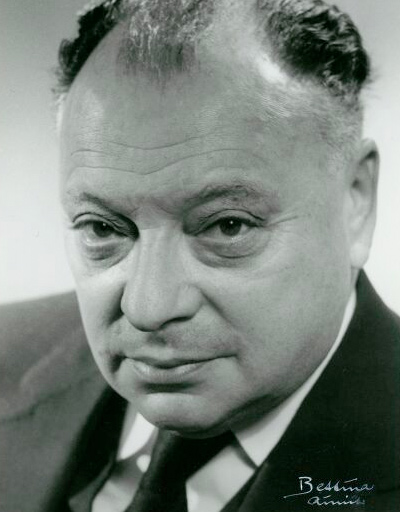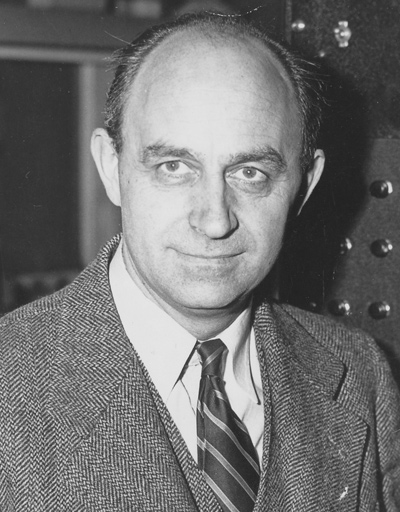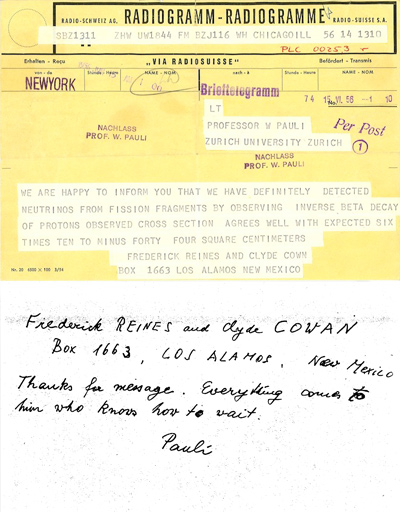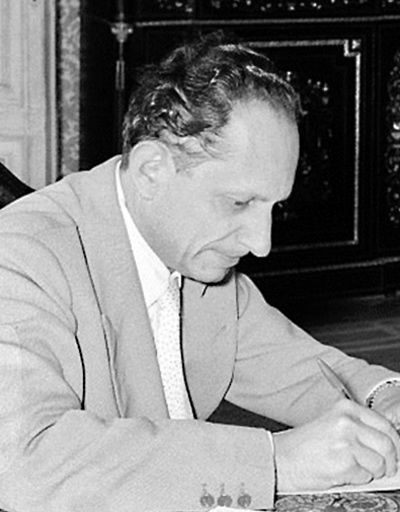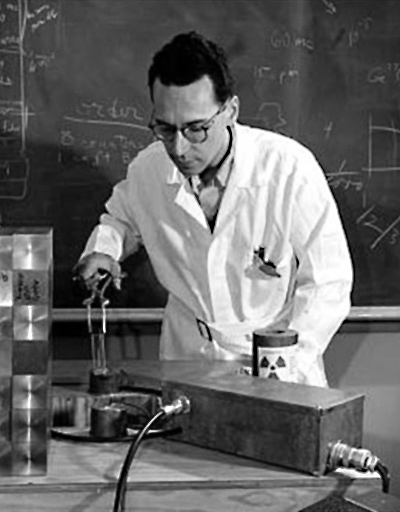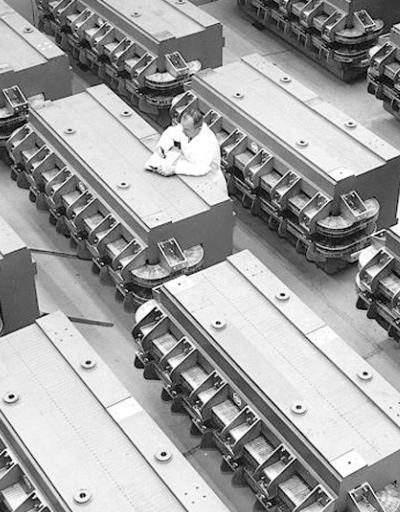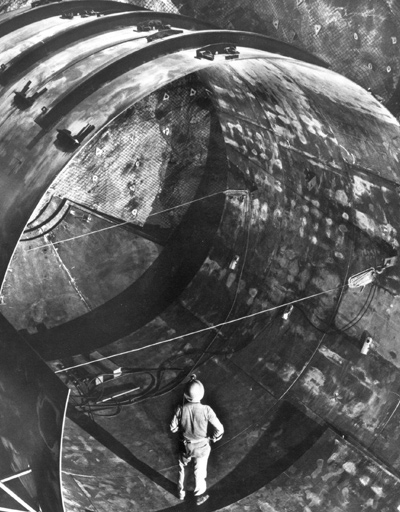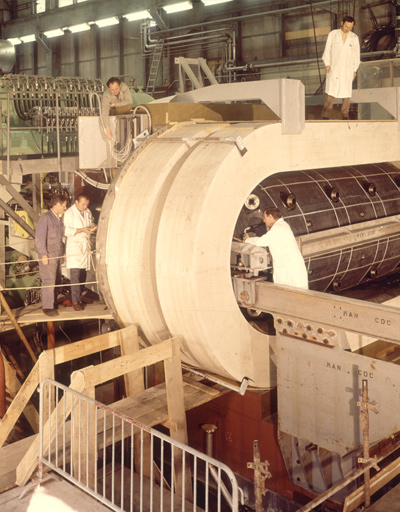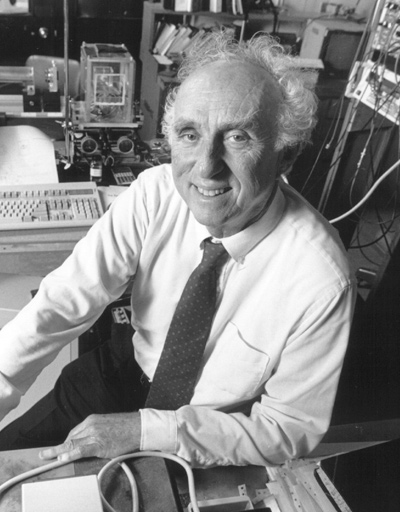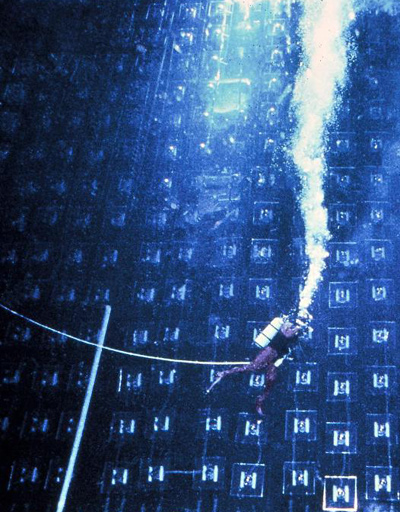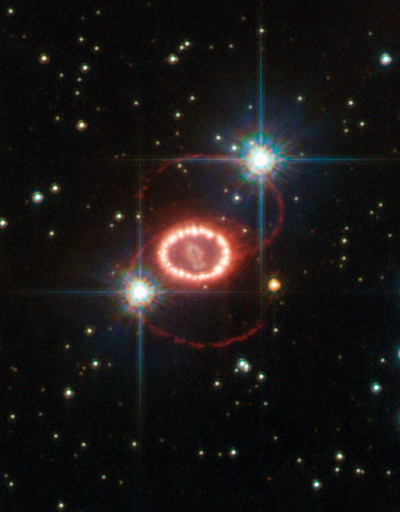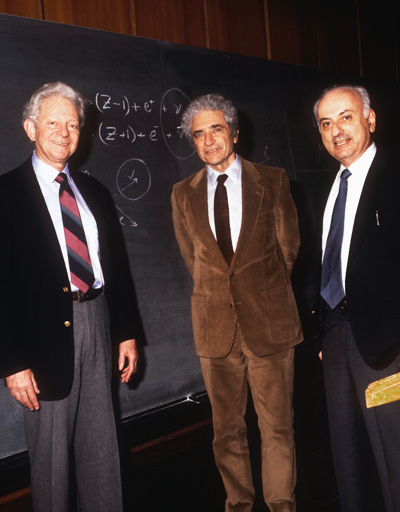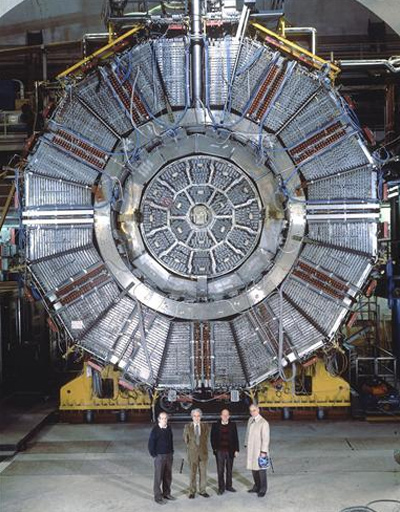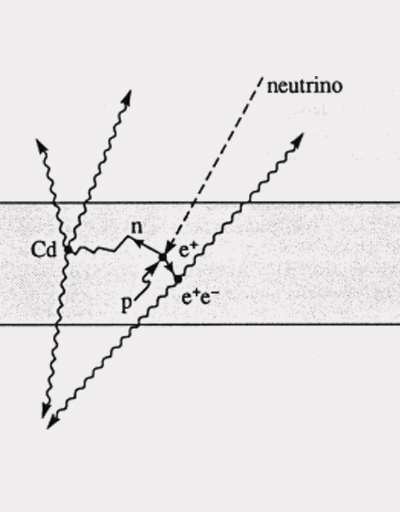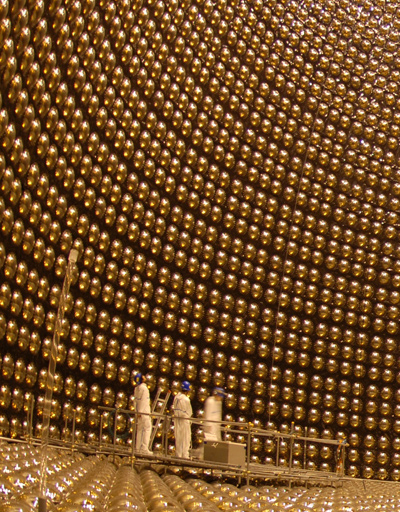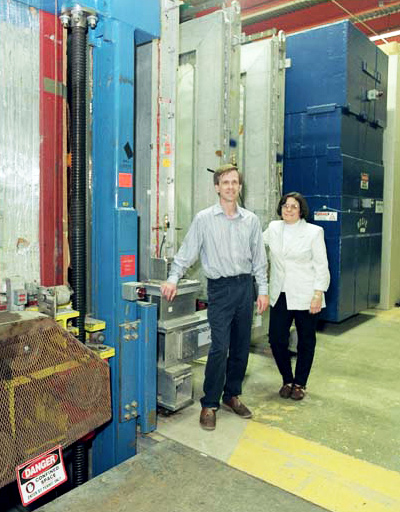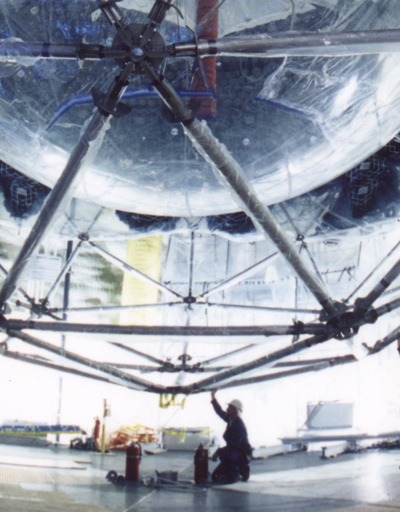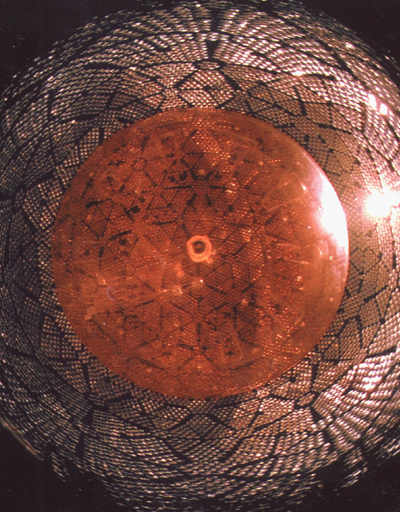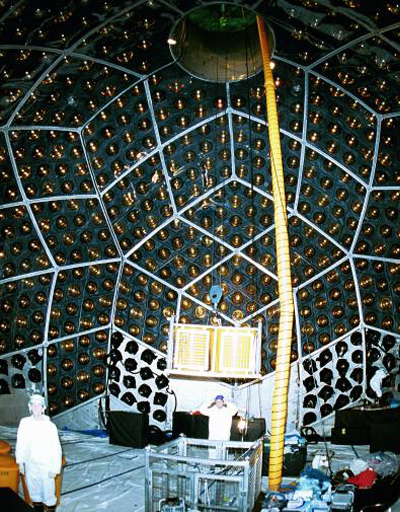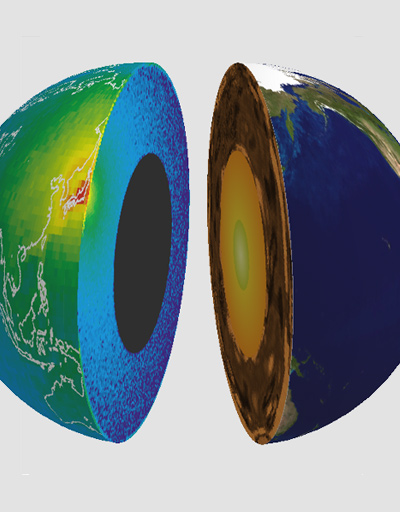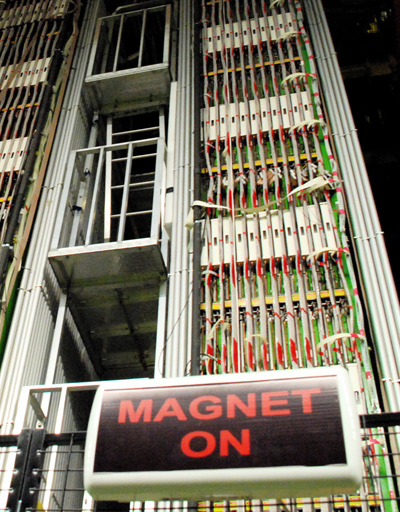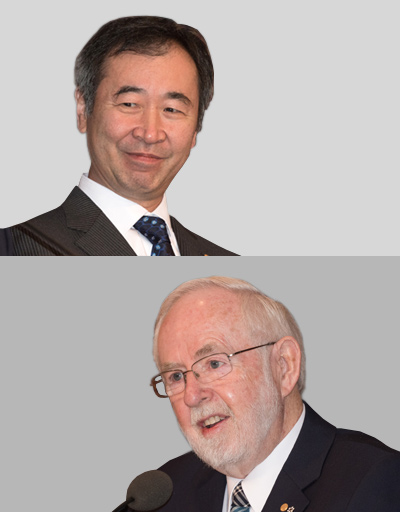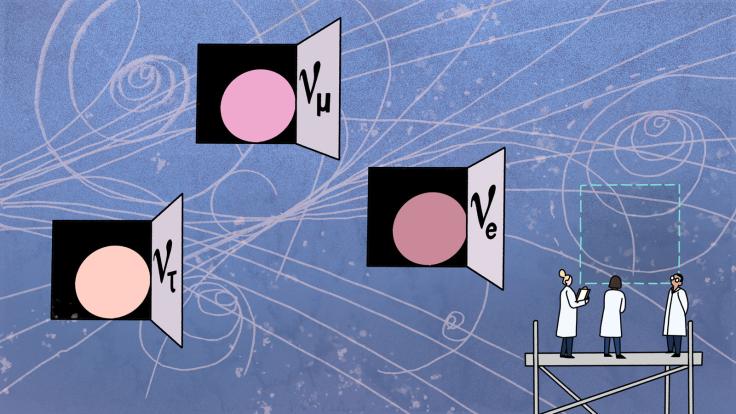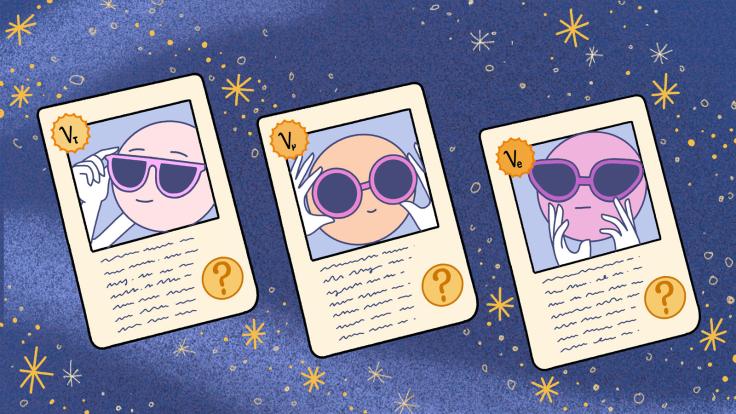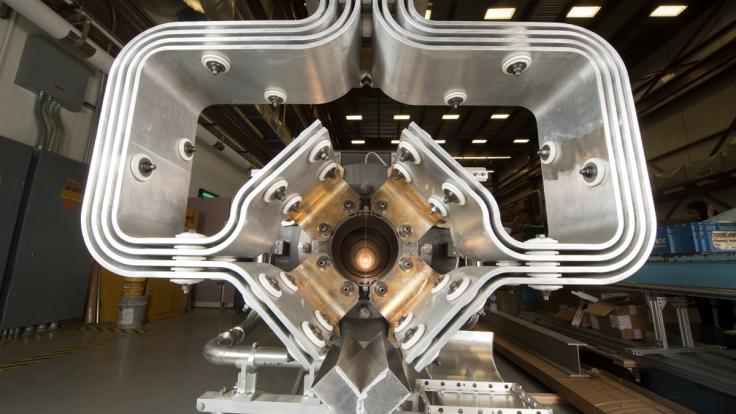In 1930, Wolfgang Pauli proposed the existence of a new tiny particle with no electric charge. The particle was hypothesized to be very light—or possibly have no mass at all—and hardly ever interact with matter. Enrico Fermi later named this mysterious particle the “neutrino” (or “little neutral one”).
Although neutrinos are extremely abundant, it took 26 years for scientists to confirm their existence. In the 60 years since the neutrino’s discovery, we’ve slowly learned about this intriguing particle.
“At every turn, it seems to take a decade or two for scientists to come up with experiments to start to probe the next property of the neutrino,” says Keith Rielage, a neutrino researcher at the Department of Energy’s Los Alamos National Laboratory. “And once we do, we’re often left scratching our heads because the neutrino doesn’t act as we expect. So the neutrino has been an exciting particle from the start.”
We now know that there are actually three types, or “flavors,” of neutrinos: electron, muon and tau. We also know that neutrinos change, or “oscillate,” between the three types as they travel through space. Because neutrinos oscillate, we know they must have mass.
However, many questions about neutrinos remain, and the search for the answers involves scientists and experiments around the world.
The mystery of the missing energy
Pauli thought up the neutrino while trying to solve the problem of energy conservation in a particular reaction called beta decay. Beta decay is a way for an unstable atom to become more stable—for example, by transforming a neutron into a proton. In this process, an electron is emitted.
If the neutron transformed into only a proton and an electron, their energies would be well defined. However, experiments showed that the electron did not always emerge with a particular energy—instead, electrons showed a range of energies. To account for this range, Pauli hypothesized that an unknown neutral particle must be involved in beta decay.
“If there were another particle involved in the beta decay, all three particles would share the energy, but not always exactly the same way,” says Jennifer Raaf, a neutrino researcher at DOE’s Fermi National Accelerator Laboratory. “So sometimes you could get an electron with a high energy and sometimes you could get one with a low energy.”
In the early 1950s, Los Alamos physicist Frederick Reines and his colleague Clyde Cowan set out to detect this tiny, neutral, very weakly interacting particle.
At the time, neutrinos were known as mysterious “ghost” particles that are all around us but mostly pass straight through matter and take away energy in beta decays. For this reason, Reines and Cowan’s search to detect the neutrino came to be known as “Project Poltergeist.”
“The name seemed logical because they were basically trying to exorcise a ghost,” Rielage says.
Catching the ghost particle
“The story of the discovery of the neutrino is an interesting one, and in some ways, one that could only happen at Los Alamos,” Rielage says.
It all started in the early 1950s. Working at Los Alamos, Reines had led several projects testing nuclear weapons in the Pacific, and he was interested in fundamental physics questions that could be explored as part of the tests. A nuclear explosion was thought to create an intense burst of antineutrinos, and Reines thought an experiment could be designed to detect some of them. Reines convinced Cowan, his colleague at Los Alamos, to work with him to design such an experiment.
Reines and Cowan’s first idea was to put a large liquid scintillator detector in a shaft next to an atmospheric nuclear explosion test site. But then they came up with a better idea—to put the detector next to a nuclear reactor.
So in 1953, Reines and Cowan headed to the large fission reactor in Hanford, Washington with their 300-liter detector nicknamed “Herr Auge” (German for “Mr. Eye”).
Although Reines and Cowan did detect a small increase in neutrino-like signals when the reactor was on versus when it was off, the noise was overwhelming. They could not definitively conclude that the small signal was due to neutrinos. While the detector’s shielding succeeded in blocking the neutrons and gamma rays from the reactor, it could not stop the flood of cosmic rays raining down from space.
Over the next year, Reines and Cowan completely redesigned their detector into a stacked three-layer configuration that would allow them to clearly differentiate between a neutrino signal and the cosmic ray background. In late 1955, they hit the road again with their new 10-ton detector—this time to the powerful fission reactor at the Savannah River Plant in South Carolina.
For more than five months, Reines and Cowan collected data and analyzed the results. In June 1956, they sent a telegram to Pauli. It said, “We are happy to inform you that we have definitively detected neutrinos.”
Major milestones in the history of neutrino research
Solving the next neutrino mystery
In the 1960s, a new mystery involving the neutrino began—this time in a gold mine in South Dakota.
Ray Davis, a nuclear chemist at the DOE’s Brookhaven National Laboratory, had designed an experiment to detect neutrinos produced in reactions in the sun, also known as solar neutrinos. It featured a large chlorine-based detector located a mile underground in the Homestake Mine, which provided shielding from cosmic rays.
In 1968, the Davis experiment detected solar neutrinos for the first time, but the results were puzzling. Astrophysicist John Bahcall had calculated the expected flux of neutrinos from the sun—that is, the number of neutrinos that should be detected over a certain area in a certain amount of time. However, the experiment was only detecting about one-third the number of neutrinos predicted. This discrepancy came to be known as the “solar neutrino problem.”
At first, scientists thought there was a problem with Davis’ experiment or with the model of the sun, but no problems were found. Slowly, scientists began to suspect that it was actually an issue with the neutrinos.
“Neutrinos always seem to surprise us,” Rielage says. “We think something is fairly straightforward, and it turns out not to be.”
Scientists theorized that neutrinos might oscillate, or change from one type to another, as they travel through space. Davis’ experiment was only sensitive to electron neutrinos, so if neutrinos oscillated and arrived at the Earth as a mixture of the three types, it would explain why the experiment was only detecting one-third of them.
In 1998, the Super-Kamiokande experiment in Japan first detected atmospheric neutrino oscillations. Then, in 2001, the Sudbury Neutrino Observatory in Canada announced the first evidence of solar neutrino oscillations, followed by conclusive evidence in 2002. After more than 30 years, scientists were able to confirm that neutrinos oscillate, thus solving the solar neutrino problem.
“The fact that neutrinos oscillate is interesting, but the critical thing is that it tells us that neutrinos must have mass,” says Gabriel Orebi Gann, a neutrino researcher at the University of California, Berkeley, and the DOE’s Lawrence Berkley National Laboratory and a SNO collaborator. “This is huge because there was no expectation in the Standard Model that the neutrino would have mass.”
Mysteries beyond the Standard Model
The Standard Model—the theoretical model that describes elementary particles and their interactions—does not include a mechanism for neutrinos to have mass. The discovery of neutrino oscillation put a serious crack into an otherwise extremely accurate picture of the subatomic world.
“It’s important to poke at this picture and see which parts of it hold up to experimental testing and which parts still need additional information filled in,” Raaf says.
After 60 years of studying neutrinos, several mysteries remain that could provide windows into physics beyond the Standard Model.
Is the neutrino its own antiparticle?
The neutrino is unique in that it has the potential to be its own antiparticle. “The only thing we know at the moment that distinguishes matter from antimatter is electric charge,” Orebi Gann says. “So for the neutrino, which has no electric charge, it’s sort of an obvious question – what is the difference between a neutrino and its antimatter partner?”
If the neutrino is not its own antiparticle, there must be something other than charge that makes antimatter different from matter. “We currently don’t know what that would be,” Orebi Gann says. “It would be what we call a new symmetry.”
Scientists are trying to determine if the neutrino is its own antiparticle by searching for neutrinoless double beta decay. These experiments look for events in which two neutrons decay into protons at the same time. The standard double beta decay would produce two electrons and two antineutrinos. However, if the neutrino is its own antiparticle, the two antineutrinos could annihilate, and only electrons would come out of the decay.
Several upcoming experiments will look for neutrinoless double beta decay. These include the SNO+ experiment in Canada, the CUORE experiment at the Laboratori Nazionali del Gran Sasso in Italy, the EXO-200 experiment at the Waste Isolation Pilot Plant in New Mexico, and the MAJORANA experiment at the Sanford Underground Research Facility in the former Homestake mine in South Dakota (the same mine in which Davis conducted his famous solar neutrino experiment).
What is the order, or “hierarchy,” of the neutrino mass states?
We know that neutrinos have mass and that the three neutrino mass states differ slightly, but we do not know which is the heaviest and which is the lightest. Scientists are aiming to answer this question through experiments that study neutrinos as they oscillate over long distances.
For these experiments, a beam of neutrinos is created at an accelerator and sent through the Earth to far-away detectors. Such long-baseline experiments include Japan’s T2K experiment, Fermilab’s NOvA experiment and the planned Deep Underground Neutrino Experiment.
What is the absolute mass of neutrinos?
To try to measure the absolute mass of neutrinos, scientists are returning to the reaction that first signaled the existence of the neutrino—beta decay. The KATRIN experiment in Germany aims to directly measure the mass of the neutrino by studying tritium (an isotope of hydrogen) that decays through beta decay.
Are there more than three types of neutrinos?
Scientists have hypothesized another even more weakly interacting type of neutrino called the “sterile” neutrino. To look for evidence of sterile neutrinos, scientists are studying neutrinos as they travel over short distances.
As part of the short baseline neutrino program at Fermilab, scientists will use three detectors to look for sterile neutrinos: the Short Baseline Neutrino Detector, MicroBooNE and ICARUS (a neutrino detector that previously operated at Gran Sasso). Gran Sasso will also host an upcoming experiment called SOX that will look for sterile neutrinos.
Do neutrinos violate “charge parity (CP) symmetry”?
Scientists are also using long-baseline experiments to search for something called CP violation. If equal amounts of matter and antimatter were created in the Big Bang, it all should have annihilated. Because the universe contains matter, something must have led to there being more matter than antimatter. If neutrinos violate CP symmetry, it could help explain why there is more matter.
“Not having all the answers about neutrinos is what makes it exciting,” Rielage says. “The problems that are left are challenging, but we often joke that if it were easy, someone would have already figured it out by now. But that’s what I enjoy about it—we have to really think outside the box in our search for the answers.”




